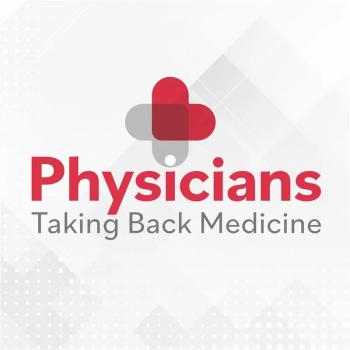
Dealing with 'deaths of despair': What physicians need to know
Life expectancy has decreased among middle-aged adults due to deaths of despair.
Much attention has been given to the recent November 26, 2019 JAMA article that concluded U.S. life expectancy has declined for the past three years as a result of increased mortality among middle-aged adults from what has been dramatically labeled deaths of despair: suicide, drug and alcohol poisoning, and alcoholic liver disease and cirrhosis.
Complementing this data is a recent September 2019 Social Capital Report that examined the crude death rates from the above conditions going all the way back to 1900. In 1907, the rate was 33.6 deaths per 100,000 individuals compared to 22.7 deaths per 100,000 individuals in 2000, before the rate precipitously rose to 45.8 deaths per 100,000 individuals in 2017. What, if anything, can healthcare providers do to arrest this devastating development that impacts not only individuals, but also families and entire communities?
Progression from Economic Worry to Deaths of Despair
Lily Shanahan and colleagues in a 2019 American Journal of Public Health article suggested a hypothetical pathway from how economic stagnation can progress to deaths of despair and where potential intervention may help moderate negative health effects. The authors suggest that individuals who live in communities that suffer from economic stagnation can face difficulty finding a job and as a result experience declining income. This can negatively impact individuals from a cognitive, emotional, behavioral and biological perspective.
If this is accompanied by disengaging permanently from the labor force and/or building effective social bonds like marriage and parenting, adverse behaviors such as drug and alcohol use may combine with mental health issues to cause suicide, drug and alcohol poisoning, or other chronic illnesses like cirrhosis that can impact mortality rates. Viewed from this perspective, the issues-economic, labor, social structures, mental health, addiction, adverse behaviors, medical illness-are so overwhelming that it is important to break down these categories into a manageable framework.
System-based approach
First, most providers have a good perspective of the socioeconomic background of the communities in which they practice. Additionally, individual stories from patients can really highlight the best and worst examples of humanity within communities. Even if providers have a thirty minute commute to their offices, their staff may live within the community and can serve as a rich source of information about the quality of local schools, if there are any food deserts (areas that have limited access to affordable and nutritious food), areas that are economically struggling, unsafe neighborhoods and unreliable public transportation.
Second, taking an inventory of local community organizations that can assist patients with free or reduced cost services like medical care, food, job training and more, can potentially alleviate some of the social determinants of health that negatively impact adherence to healthcare recommendations. A free website that identifies these types of programs and services in communities can be found at AuntBertha.com. If I type in the zip code where I work (43228) I am alerted that 1,554 programs serve people in my zip code under the following categories: food, housing, goods, transit, health, money, care, education, work and legal services.
Mental Health
A major focus regarding understanding “deaths of despair,” are terms like “loneliness” and “unhappiness.”
These terms, although associated with certain feelings in the listener, may not necessarily indicate a diagnosable illness where medical treatment is indicated. It is up to the practitioner using validated screening tools to help elicit if these feelings might uncover underlying depression and/or anxiety that may require medical therapy or counseling services.
If patients have more of a feeling of loneliness or unhappiness, but without underlying depression or anxiety, inquiring about their interests or whether they have any social support at home can help create a patient-directed goal to become more involved in community offerings. This may also uncover any barriers, like lack of transportation that potentially can be mitigated.
Alcohol/Drug Addiction
A complete history and physical exam can elicit whether patients have alcohol or drug dependency or addiction. This can guide evidence-based testing and treatment to assess if there is any underlying liver disease in the case of alcohol abuse or inquiring about the substance and route of drug administration that can guide further assessment of whether there is any additional complications.
Assessing if there are any comorbid mental health issues is important to not only ensure a comprehensive treatment plan but may be needed to achieve a positive behavioral change in reducing or quitting alcohol and drug use. It is also important to undercover any behaviors that may influence the selection and monitoring of chronic pain therapy that may narrow the safety profile of combining prescribed and non-prescribed mood altering drugs. An important self-reflective activity practitioners can do is to examine how they prescribe opioids. Across the country, health systems are examining how they manage acute pain in the emergency department and outpatient operative settings by changing the default setting in their electronic prescribing system to limit the length of opioid therapy to three days. Providers have to manually change the length of therapy if they want to prescribe a longer duration of opioids.
Additionally, knowing what addiction services exist in the community can help both providers and patients manage a challenging clinical condition that is difficult to manage. Some of the most heart breaking moments I have experienced is when a patient thats continues to use illicit substances and is irreparably harming himself, extends gratitude for treating them in a compassionate manner despite their self-harming behavior.
Because providers are human, they have both empathetic and insensate feelings in managing patients who are harming themselves in this manner, but I try to remember back to my childhood when my friends and I were asked what we wanted to be when we grew up. No one ever answered, “I want to be a heroin addict.” Although the root causes that lead to “deaths of despair” is not one that can be solved exclusively by healthcare providers, it’s important that clinicians realize their ability to effectively treat patients in a non-judgmental way can serve an instrumental role in trying to stem the premature loss of life in an age cohort that otherwise should ostensibly have decades more to live.
Joseph M Geskey is the Vice President of Medical Affairs at OhioHealth Doctors Hospital in Columbus, OH. He is currently working on a book about the healthcare experiences of patients with limited health literacy and challenging social determinants of health in the digital and technological era medicine is embracing.
Newsletter
Stay informed and empowered with Medical Economics enewsletter, delivering expert insights, financial strategies, practice management tips and technology trends — tailored for today’s physicians.








